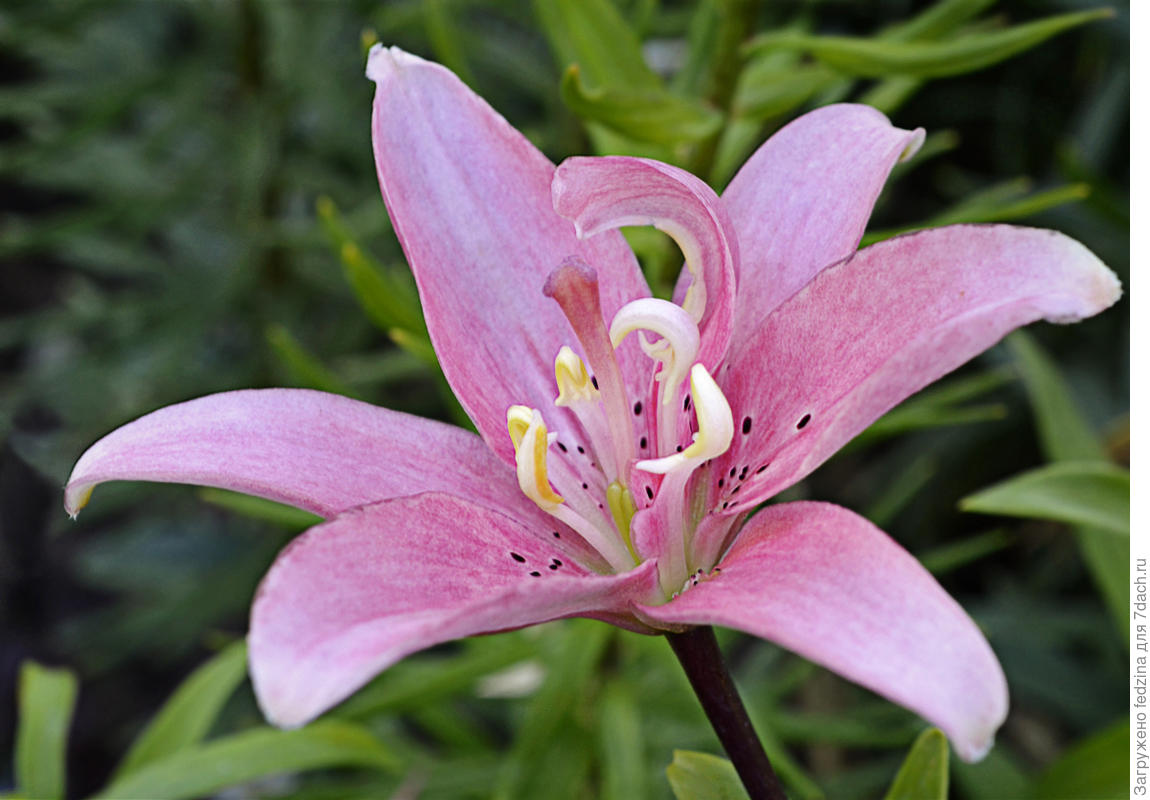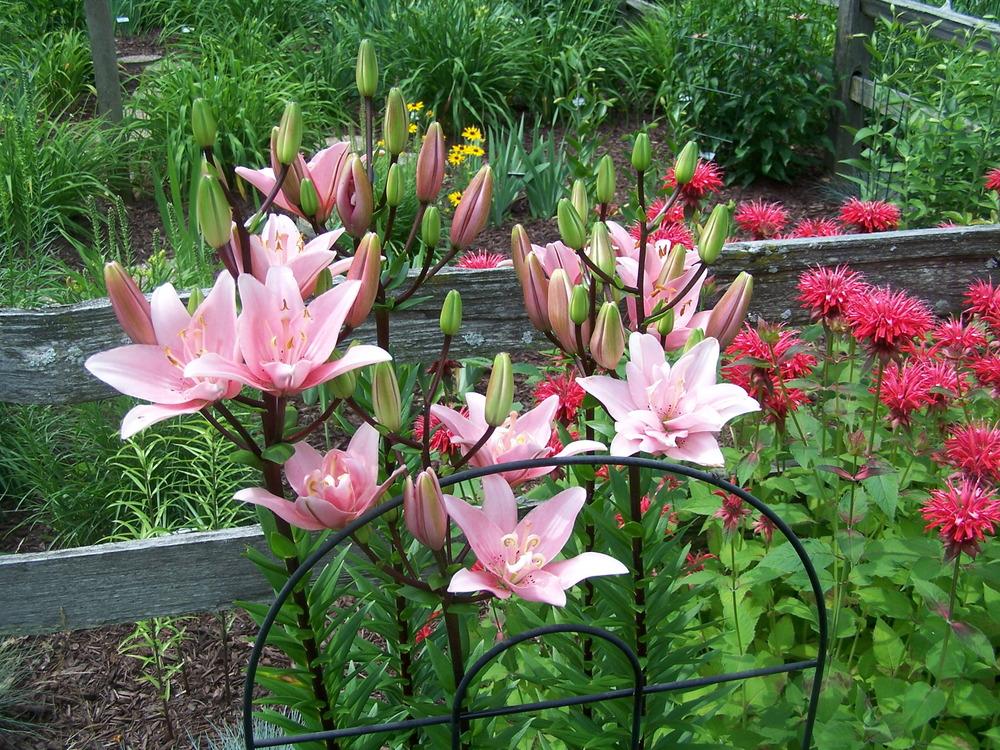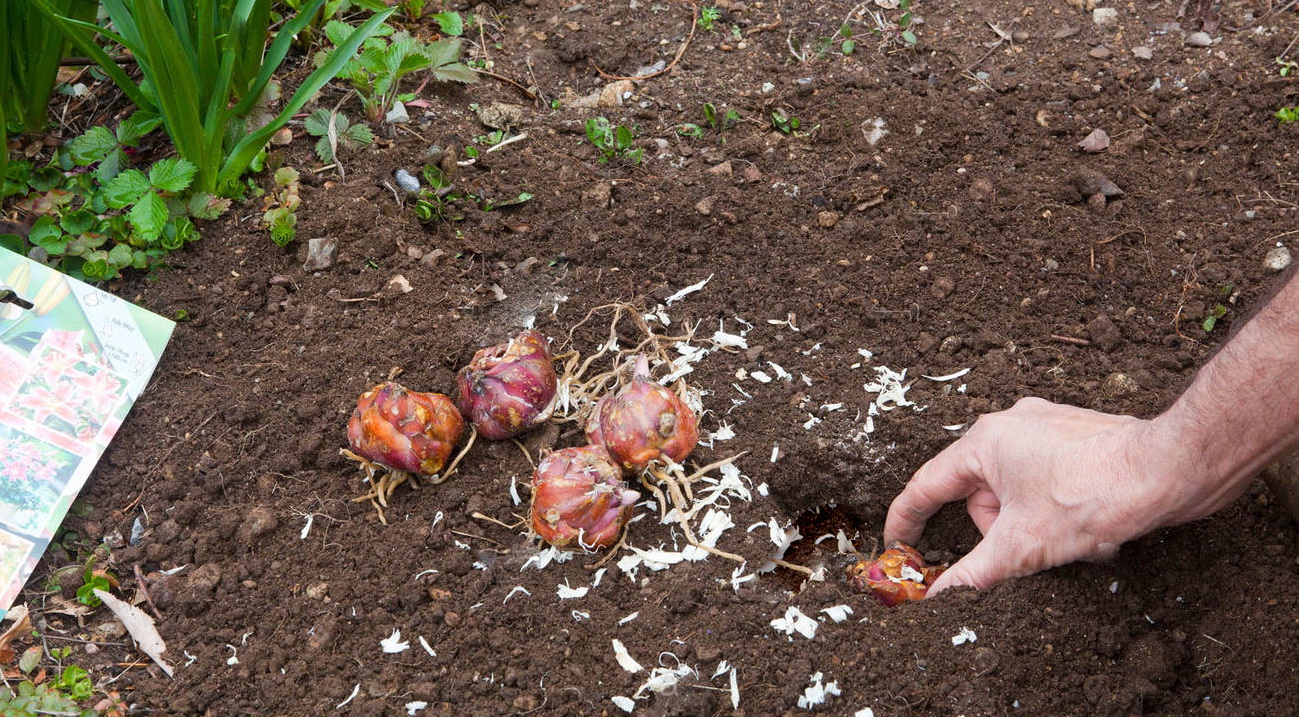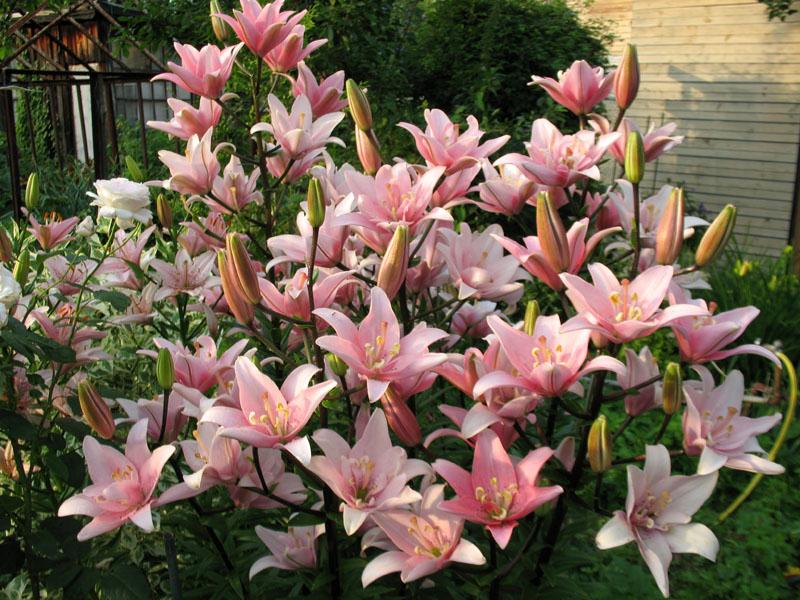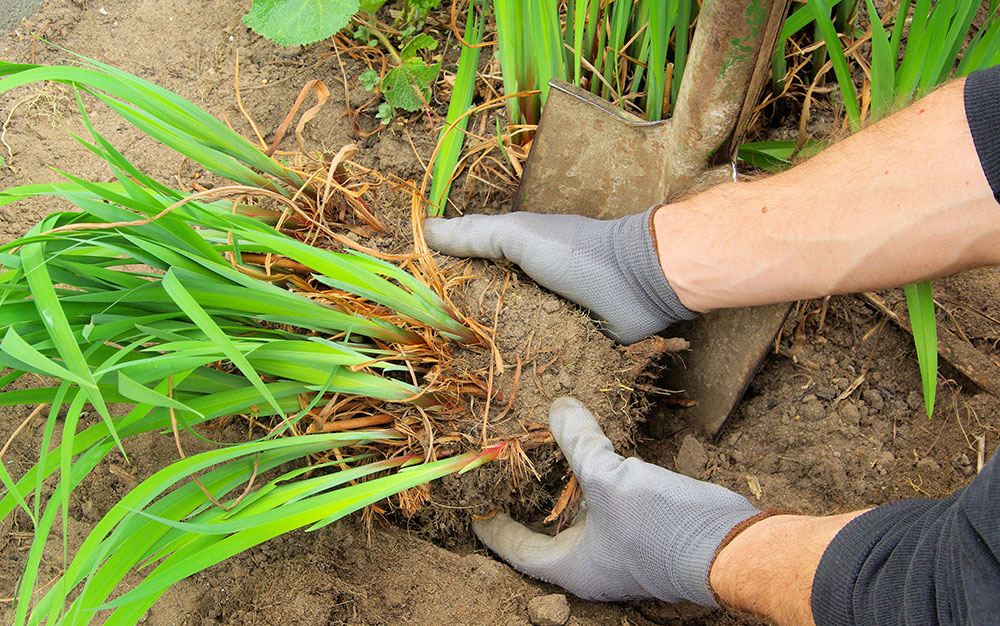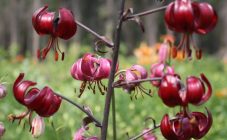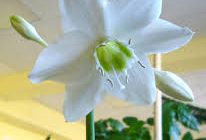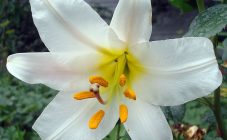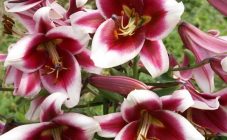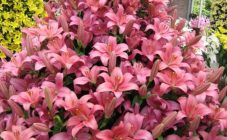Content:
Lily hybrids of Asian origin are most popular with hobby gardeners. They perfectly tolerate the hardships of the Russian climate, enchant with the color of their flowers. Lily Elodie (Elodie) deserves special love, perfectly in harmony with other flowers in flower beds or in bouquets.
Lily Elodie - what is it
Lilia Elodie - an excellent representative of Asian hybrids - is considered one of the best varieties of its group. It was bred in 2003 by A. Peters, a specialist at the largest Dutch company Marklily. The correct spelling of the variety name is Elodie (female French name).
Lily characteristic
Elodie from the class of monocotyledons of the Liliaceae family, like all its relatives, is a perennial bulbous plant.
Description of the appearance of the lily:
- The adorable early flowering lily of Elodie often reaches a height of 120 cm, less often 140, although the parameter is limited to 90-100 cm by the organizer.
- The leaves of the plant are alternate, in a traditional form for all lilies. Average dimensions 14 × 1.5-1.6 cm, deep green.
- The number of buds on a peduncle is 7-10 pcs.
- The flowers are large, up to 15-17 cm in diameter, although in primitive plants they are much smaller. Separate petals, radially symmetrical, their number is 10 pcs. The lower tiers consist of 6 large, slightly curved plates with wavy edges, the upper - of 3 "fanged" carved plates with 3 corners. The upper tier of petals usually appears from the second year of flowering.
- The stigma of the flower is red with a purple tint, the nectaries are yellow with a greenish tint.
- The corolla is pink with small dark, almost black dots. On the inside, purple-pink strokes are clearly distinguished, the neck is white-yellow.
The root system of the Elodie lily includes:
- basal and contractile roots growing from the bottom of the bulb;
- suprapubic, helping to hold the stem.
The main characteristics of the Elodie variety:
- lack of pollen on stamens;
- very faint, practical, elusive aroma;
- excellent winter hardiness up to -34 ° С;
- disease resistance;
- about 90 days pass from germination to the opening of the first buds;
- flowering occurs in the second half of June - July;
- vegetative reproduction.
The Elodie lily is propagated by vegetative methods:
- planting daughter bulbs;
- growing from scales;
- dividing the bulb.
Features of landing Elodie
The place for planting Elodie in open ground is chosen taking into account the requirements typical for Asian varieties and hybrids. It is important for her:
- good lighting, partial shade is allowed in the afternoon;
- good drainage;
- the soil is neutral, slightly acidic is possible, the optimal pH is 6-6.5;
- the soil is fertile, loose, with good water permeability - loamy or sandy loam.
The depth of the planting hole is determined by the mechanical properties of the soil and the size of the bulb. Before planting the bulbs, spill it well with water.
The timing of planting the lily of Elodie is the first half of September (in the south until the end of the month) or from April (for the Central strip, Siberia, the Urals - from the second half of April).
Planting technology Elodie:
- remove damaged, dry scales;
- old roots are carefully trimmed;
- etched with a weak solution of potassium permanganate or hydrogen peroxide;
- a layer of coarse disinfected sand is poured at the bottom of the hole;
- if the bulb has given roots, they are shortened to 5-6 cm;
- form a mound on which the tuber is located, directing the roots along the slope;
- covered with sand;
- fill the hole with nutritious soil;
- the planting site is covered with mulch.
The Asian terry lily Elodie is transplanted every 4-5 years. The main sign of the need for a transplant is the appearance of young shoots around the main adult. Young growth means that the mother bulb has formed daughter bulbs, and they are ready for independent life.
Basic care for the Elodie lily
Unpretentious Elodie needs increased attention before flowering. A healthy, pest-free plant is content with timely watering and top dressing, introduced according to a strict schedule.
Watering
Carry out regularly and in moderation rather than abundant. The Asian woman does not tolerate excess moisture, it is better for her to underfill than to drown in a swamp. To preserve moisture, mulching of the base of the stem and the adjacent area is suitable, as well as planting low-growing neighbors, which will additionally protect the delicate stem from overheating by the sun. Water for irrigation requires warm, soft, settled water.
Top dressing
Apply three times per season:
- After the snow melts, but before the shoots appear. Fermented last year's manure is suitable, at the rate of 10 liters of water per 1 liter of mullein. Organic matter can be replaced with ammonium nitrate by dissolving 4 g of the substance in 1 liter of water.
- When buds appear, they are fed with ash, scattering it over the ground at the rate of 100 g / m².
- At the end of flowering, add superphosphate (1 tablespoon per 10 liters of water), mineral complexes with a high content of potassium salts according to the instructions. Additionally, the feeding with wood ash is repeated.
Preparing for winter
Elodie's lilies are prepared for a problem-free wintering in advance:
- At the end of flowering, the peduncle is cut off, but not lower than 15 cm from ground level. The remainder with leaves contributes to the accumulation of nutrients in the bulb.
- In the fall, when the leaves are completely dry, the stem is cut to a 5-6 cm hemp.
- If the plant does not need the selection of children, it is left to winter in the ground. First, the remaining hemp is treated with Bordeaux liquid so that the autumn lingering rains do not provoke rotting of the bulbs.
- The next step is mulching. The thickness of the mulch layer depends on climatic conditions - from 5 to 10 cm.If the place where Elodie grows is blown out in winter, arrange a light shelter from dry leaves under a wooden or plastic trellis box or cover with a cloth that allows the earth to breathe under it.
If the bulbs of the Elodie lily were dug up in order to separate the offspring, they are stored at home until spring:
- Disassemble and sort. Adult bulbs are stored separately from daughter ones.
- Inspect, cut out areas affected by rot.
- The tubers are washed and disinfected with a pale pink solution of potassium permanganate.
- Spread out to dry in a shaded place where the air temperature does not rise above 18 ° C.
- The dried planting material is rolled in wood ash and packaged. For storage, cardboard boxes, plastic containers, wooden or plywood boxes are suitable. The bulbs can be sprinkled with slightly moistened sawdust or shifted with sphagnum so that they do not dry out.
- Store packages in a cool place - refrigerator, basement, cellar.
Diseases and pests of the lily of Elodie
Gray rot that affects the bulb appears on the leaves and buds as brown spots, which dry out in a short time. To prevent damage, phytosporin is used, adding it to water for irrigation every 15 days. Diseased plants are treated with preparations containing copper - oxyhom, abiga-peak, ordan, etc.
Fusarium has no external manifestations, since the process affects only the bottom of the corm, causing it to rot and die of the plant during hibernation. An effective measure of protection is regular soil treatment with copper-based fungicides.
Of the pests for "Asian women", the danger is posed by a squeak beetle eating buds, leaves, a bear, a beetle (larva of a May beetle), a click beetle (wireworm) feeding on bulbs. For processing leaves, stems, buds, use means karbofos, actellik, fitoverm. To protect the corms, drugs are used thunder, grizzly, fly beetle.
When growing, the delicate lily Elodie, like all her terry sisters, requires strict adherence to simple care rules. But this is a mere trifle compared to the splendor of the well-groomed flowers that adorn the flower garden or the interior of the living space for a long time.
